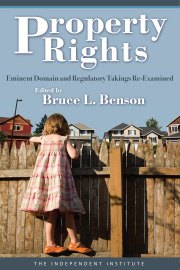Steven Spielberg’s reprise of the 1961 multiple Academy Award-winning film, West Side Story, is a masterful piece of cinematic art. Still, it’s flopping at the box office, pulling in less than half of what analysts expected. Movie insiders are blaming the lingering effects of the pandemic and anemic marketing. In fact, the dismal showing may be due to something much more mundane: Mr. Spielberg and screenwriter Tony Kushner overlooked their audience.
Mr. Spielberg once again elicits high-caliber performances out of underappreciated actors. Mr. Kushner’s screenplay successfully updates the themes and plot to address more contemporary concerns than the original, adapted from the long-running Tony Award-winning Broadway musical by Jerome Robbins and Leonard Bernstein. The choreography, while not inspired, is engaging and suitable to the tone, scenes and story arcs. The musical performances do justice to the classic songs as the tragic story of race-based gang violence and justice plays out.
What went wrong?
While new waves of the pandemic are certainly depressing attendance at theaters, a bigger factor might be the fact that large shares of the American public can’t understand this retelling of the classic story. Literally. And word got out.
While it’s the music that many of us associate with West Side Story, much of the story is told through spoken language, with the Sharks in Mr. Spielberg’s version, the Puerto Ricans, speaking Spanish and their adversaries, the Jets, speaking English.
Forgoing subtitles for the Spanish dialogue was a deliberate decision. “If I subtitled the Spanish,” Mr. Spielberg told entertainment digital media platform IGN, “I’d simply be doubling down on the English and giving English the power over the Spanish ... I needed to respect the language enough not to subtitle it.”
This was an artistically bold choice. But the decision also sidelines the vast majority of the film’s potential audience, since Spanish speakers represent just 13% of the American public, according to U.S. Census Bureau estimates.
This means substantial parts of the film are inaccessible, or at the very least are hard to track, for non-Spanish speakers. While the scenes are artfully scripted and acted, and sometimes use a mix of English and Spanish dialogue—which attentive audience members may be able to follow—many non-Spanish speakers will get lost or lose interest.
The attempt to make Spanish dialogue accessible to non-speakers without subtitles also creates awkward moments. For example, Puerto Rican characters admonish family members for speaking Spanish and encourage them to “practice” their English at several points. But the conversations suffer from a lack of intimacy and passion because they take place in English, rather than in the characters’ native tongue, which would be much more likely if the character wished to convey the full meaning. So, the dialogue in these scenes tends to come across to English-speaking audiences as pandering.
Paradoxically, by eschewing subtitles, Mr. Spielberg and Mr. Kushner essentially leave non-Spanish speakers out of critical plot points and deny them insight into the Puerto Rican characters.
As a result, West Side Story will fall flat as a film for many. They won’t participate fully in critical points that made the original play and film so poignant and powerful to broad audiences.
The potential consequences of this artistic choice are unfortunate. West Side Story is an important revision of a classic story of the futility of violence and the tragic consequences of persistent prejudice and discrimination. Mr. Spielberg helmed an excellent movie that deserves a much wider audience than it likely will get.
Ironically, for a movie that nobly attempts to show the value of bridging ethnic differences and exposes the nihilistic void of violence and retribution, the 2021 version of West Side Story contributes to an intractable sense of ethnic separateness.










